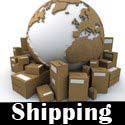
A few days ago, the Wall Street Journal reported that the year 2012 witnessed a surprisingly large buyer in the global rice market: China. For decades, China’s continued growth in rice production makes Chinese exports of rice become far more than imports. However, at present, China’s record high import of rice from the global food market has aroused universal concern from all over the world.
USDA’s monitoring data show that in 2012, China’s import of polished rice from the international food market amounted to 2.6 million tons, a year on year increase of 352.17%, compared with the 0.575 million tons in 2011, scoring a new highest record in history. However, in the past 50 years, China was net rice importer for only 4 years.
According to the Wall Street Journal, some international analysts believe that large-scale imports of rice in China are driven by the substantial growth in its consumer demand. Even when Chinese rice has maintained an increase for nine consecutive years, it still can not meet the needs of their people. If this is the case, it marks the start of a major and long-term change a major global rice market and . This may lead to concerns about the ability to meet the demand for rice production , which will make the rice prices will remain high
While Ma Wenfeng, food analyst from BOABC, expresses his own view that it is the huge price difference at home and abroad caused by China’s current policy of food purchasing and storage that actually propels the large-scale imports of rice in China. This will definitely contribute to the large food imports of the enterprises which have import quotas from international market to gain huge interest margin.
In 2012, China’s large purchase in global food market has triggered the international market’s concerns about China’s domestic food security and the global rice price fluctuations.
Fang Cheng, senior economist from FAO, says if the current trend continues, people will begin to worry whether the output overseas could meet China’s demand of rice or not. FAO publishes that the rice trade in 2012 is only 37,300,000 tons, accounting for 7.7 per cent of the globle supply and China’s annual rice consumption is about 0.14 billion tons. Therefore, any change in rice trade can have great impact on the situation as a whole.

In 2008, the rise of other staple food price driven by the soar of rice price led to the outbreak of global food crisis.
As for this case, Ma Wenfeng said that China’s grain output witnessed an increase for eight consecutive years from 2004 to 2011, the total food output increased from 0.43 billion tons in 2003 to 0.57 billion tons in 2011, the compound annual rate of growth is 3.6 per cent. The international data shows that China’s annual rice consumption is 0.14 billion tons, while its current rice output has reached 0.201 billion tons.
Domestic food supply has exceeded its consumption since 2006 and the food safety coefficient has risen gradually. In 2011-2012, China’s food safety coefficient has rebounded to 38.9 per cent.
Thomas Pugh, commodities economist from Capital Economics, research institute in London, believes that China now basically has two rice markets each independent of the other, in one of which farmers sell rice to the government, in the other one ,consumers buy rice from overseas. This leads to the result that most of the rice purchased by government is stored rather than processed and consumed.
In order to protect farmers’ interests, on behalf of Chinese government, the central enterprise, China Grain Reserves Corporation purchases and stores the rice in accordance with the policy. However, the rice price set by the government is much higher than the rice of the same level in the global market. Therefore, rice import form countries such as Vietnam, Pakistan and India becomes more profitable for Chinese importers, as the imported rice can be sold at a higher price in domestic market .
Ma Wenfeng says that the significant amounts of imported rice in 2012 has certain early background factors which include the international economic downturn in previous year and the suppression of agricultural product price, but at the same time the international agricultural product embraces bumper harvest, global grain output hit a new historical record , especially in South Asia, Southeast Asia which further depress the food price in the international market. On the domestic side, China’s overall economy level is above the international standard with a lot of capital flowing into the domestic market, which exacerbates the domestic inflationary pressures and promotes the domestic rice price rise.
“Seen from the month-on-month price in 2012, the price gap between ordinary Thai white rice and domestic rice is about 100 dollars per ton, between Vietnam and Pakistan rice and domestic rice, the average price gap is over 200 dollars per ton. This is the main reason why domestic merchants tend to buy large amounts of imported rice from Southeast Asia rather than in China” said Ma Wenfeng.
Ma Wenfeng predicts if domestic rice prices remain stubbornly high in 2013, then the qualified businesses will certainly continue to expand the use of rice import quota rights to further improve the volume of rice imports in Southeast Asia. Currently, the national import quotas is over 7 million tons, while China’s import volume is only 2.6 million tons in 2012, which shows that there is still much room for growth. “Although millions of tons of imports is not enough to affect food security in China, there will be some negative impact for many domestic enterprises.” said Ma Wenfeng.
As far as we know, the imported rice tend to be sold largely to the rural farmers market with low purchasing power and to the food service industry hoping to save the cost.Ma Wenfeng also believes that from the national macro view , the large influx of imported rice will make the domestic rice purchasing and storage increase significantly, which will not only make the government allocate additional financial subsidies for domestic grain and oil reserves, the more important is that the grain safety reserve period is only 2 to 3 years, currently there are 52.3 million tons of grain not well suited for long term storage, and excess food stock will cause a large waste due to the aging of grains.
“More importantly, affected by excessive domestic food price, consumer goods price increases rapidly. Food is the paramount necessity of the people, which will inevitably make labor cost higher. This will not only suppresses other consumer demand, but also loses the cost advantage of labor-intensive industries. As a result, it will impact commodity exports and inhibit the growth of the domestic economy.” said Ma Wenfeng.






